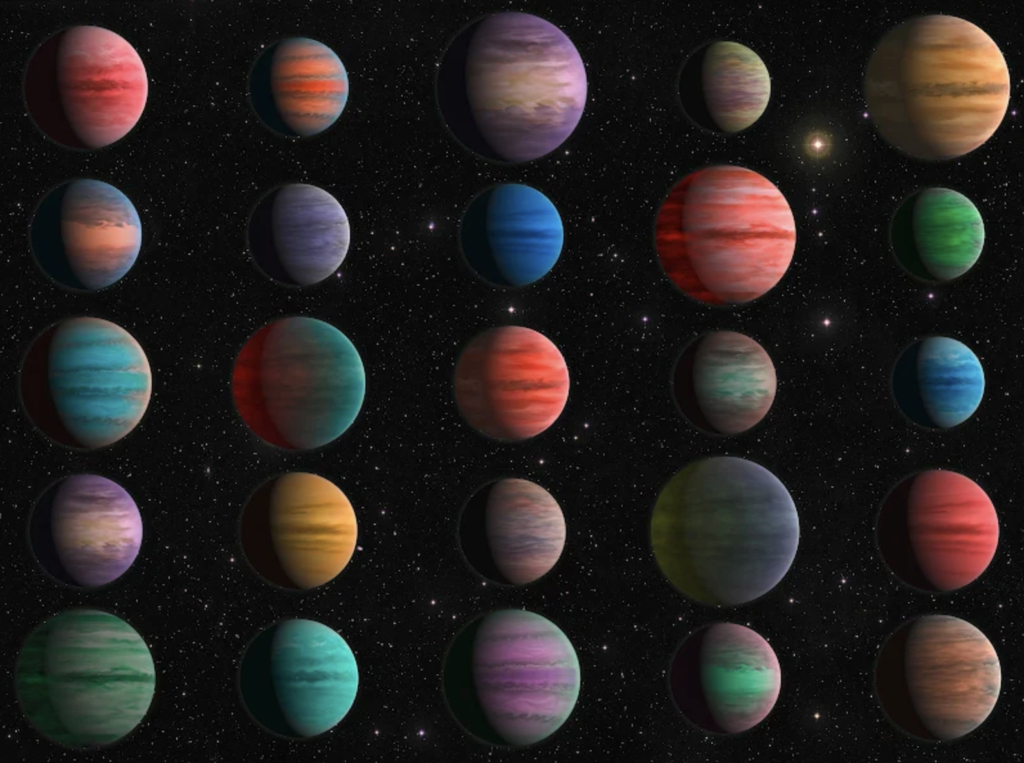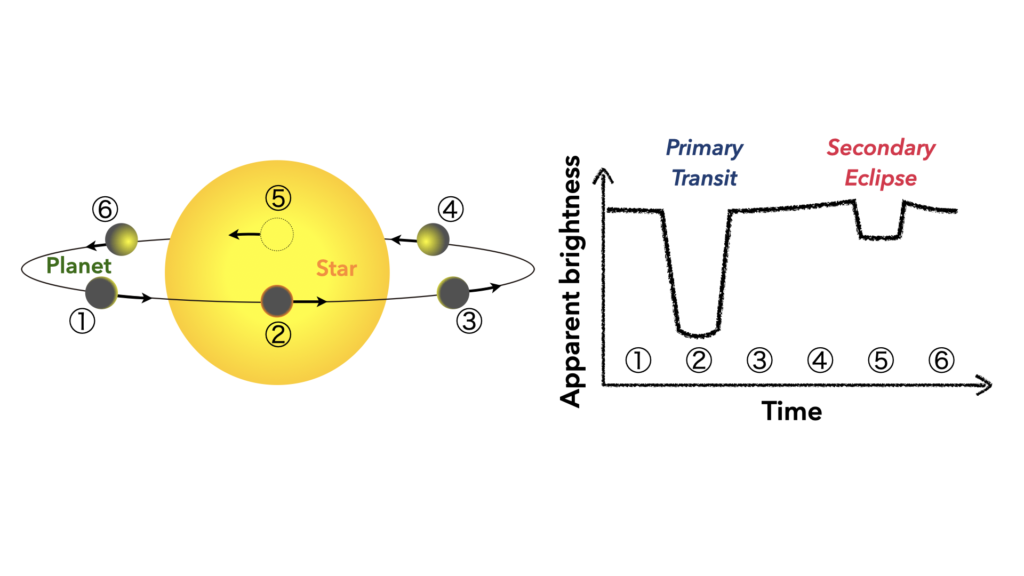Division of Science, NAOJ
Exploring Atmospheric Properties from Eclipse Data for 25 Hot Jupiters: New Phase in Exoplanet Atmosphere Research

The research field of exoplanets has entered an era in which we not only detect new planets but also investigate (characterize) in detail the properties of already detected planets. An international research team that Prof. Masahiro Ikoma of the Division of Science, NAOJ, joins has developed and applied a new analysis method (atmospheric retrieval method) to infrared spectroscopic data for 25 hot Jupiters obtained by the secondary eclipse observation method with the Hubble Space Telescope and Spitzer Space Telescope. The team has succeeded in extracting some correlations between their atmospheric properties including the temperature structure and chemical compositions, which had not been known before. This research has led to a new phase from the characterization of “individual” planets to that of planetary “populations.” The findings obtained in this study will be further investigated and verified by the James Web Space Telescope (JWST) which was launched last year and the Atmospheric Remote-sensing Infrared Exoplanet Large-survey (Ariel), which is scheduled for launch in 2029. The characterization of planetary populations developed in this study will also be useful and crucial to understanding the characteristics, formation, and evolution of various types of planets.
So far, about 5,000 exoplanets have been discovered. However, no planetary system with a structure like that of our Solar System has been found among them, indicating that planetary systems are indeed diverse. In particular, gas giant planets called “hot Jupiters,” which orbit close to their host stars, do not exist in our Solar System, and their characteristics and formation remain a mystery. To characterize the atmospheres of the 25 hot Jupiters, the research team reanalyzed a vast amount of archived data consisting of approximately 600 hours of Hubble Space Telescope observations and more than 400 hours of Spitzer Space Telescope observations. They found that secondary eclipses (see Figure 2) were observed for all the 25 hot Jupiters, which occur when an exoplanet passes behind the central star as seen from the Earth, and the apparent decrease in the central star’s luminosity is called a “secondary eclipse. By spectroscopically observing the apparent decrease in the luminosity of the central star, we can estimate the vertical distribution of the atmospheric composition and temperature of the planet.

As a result of these systematic characterizations of many hot Jupiters, the research team found several clear trends and correlations among the hot Jupiter properties. For example, they found that in more than half of the atmospheres in their sample, the temperature increases with altitude (so-called temperature inversion). And those atmospheres were found to contain titanium oxide (TiO), vanadium oxide (VO), iron hydride (FeH), or hydrogen negative ions (H-) at temperatures higher than 2000 K. From this fact, one can infer that planetary atmospheres being hot enough to contain such metallic species absorb large amounts of central stellar light and heat the upper atmosphere, resulting in a temperature inversion. For the relatively cooler atmospheres, the team found that there are two populations, one in which H2O is detected and the other in which no H2O is detected. For the latter population, it was suggested that H2O is not chemically produced because of the relatively high carbon content of the atmosphere. In addition, such population study has led to validating or disproving what had previously been suggested by the characterization of individual planets.
This research is presented in the following paper published on April 25, 2022, in the Astrophysical Journal Supplement Series: Changeat et al. “Five key exoplanet questions answered via an analysis of 25 hot Jupiter atmospheres in eclipse”
The Astrophysical Journal Supplement Series : https://iopscience.iop.org/article/10.3847/1538-4365/ac5cc2

